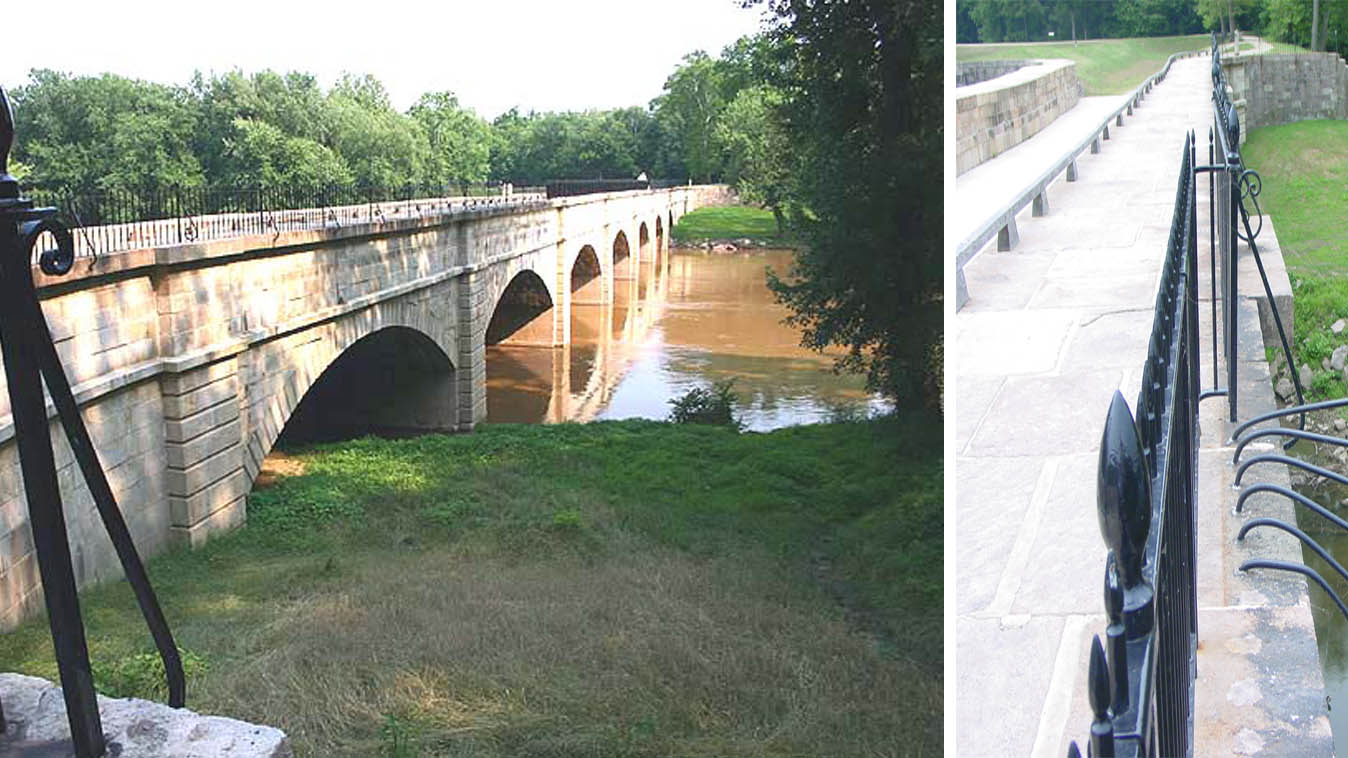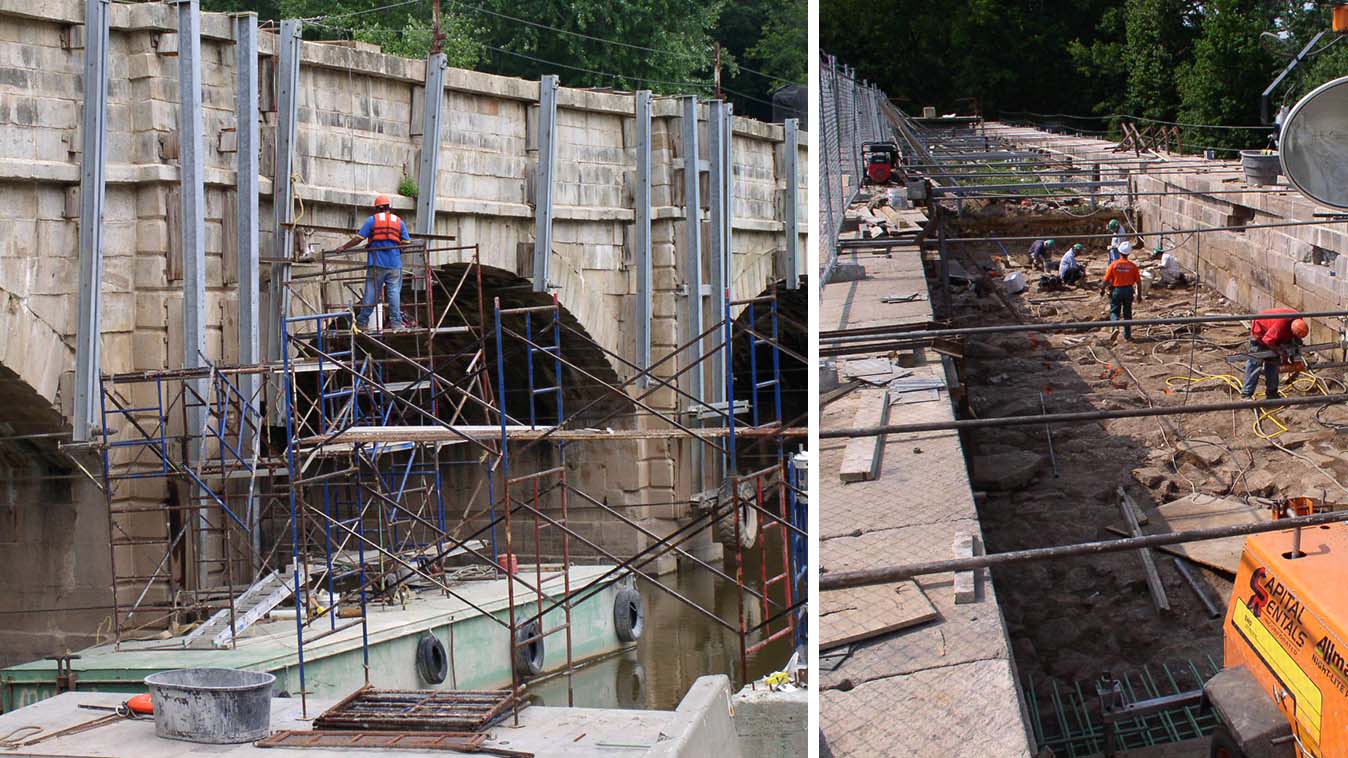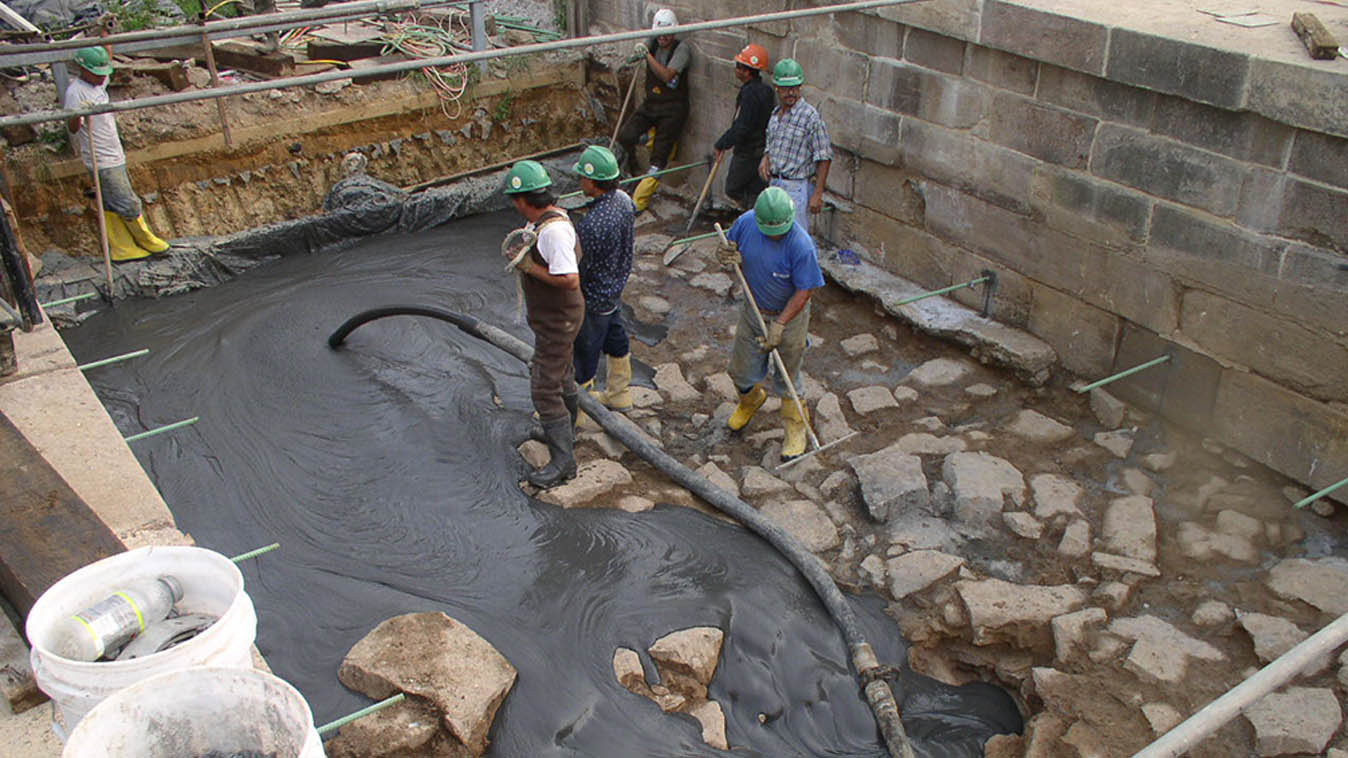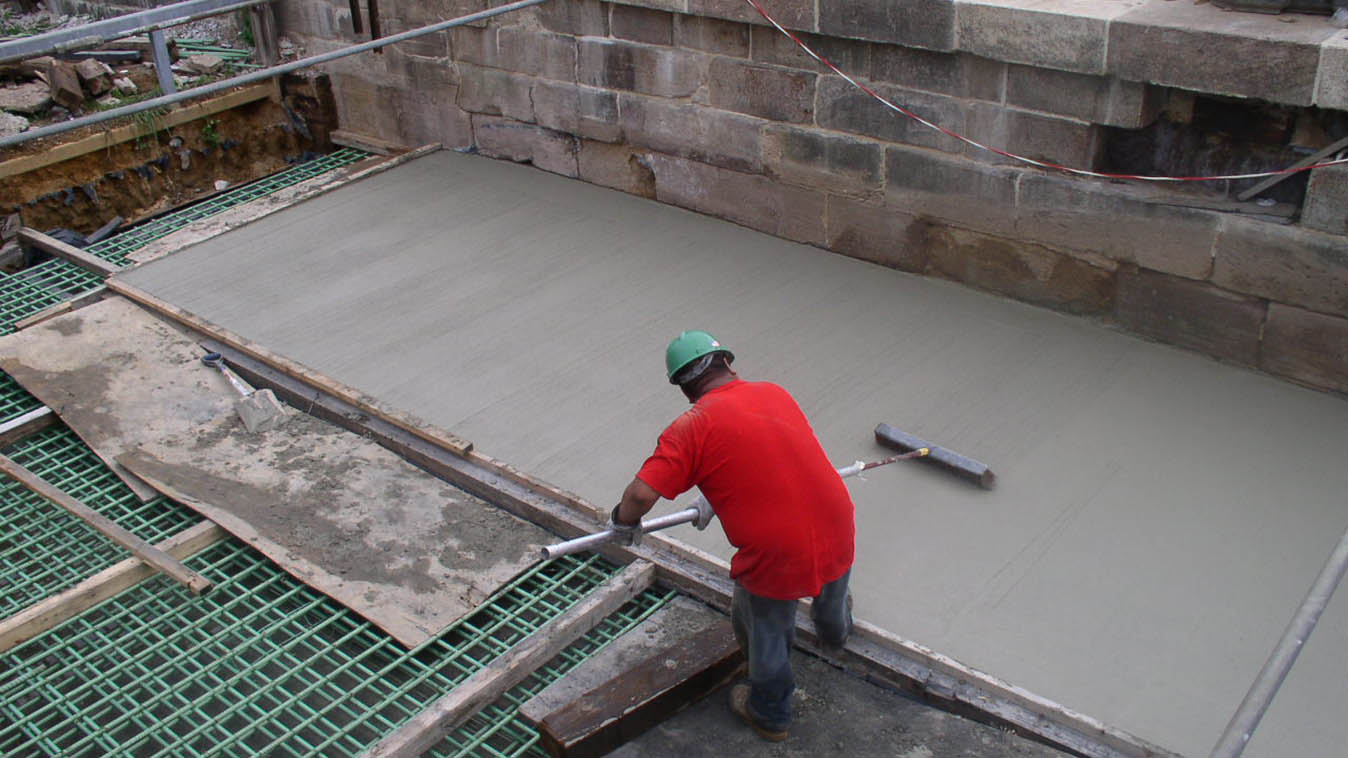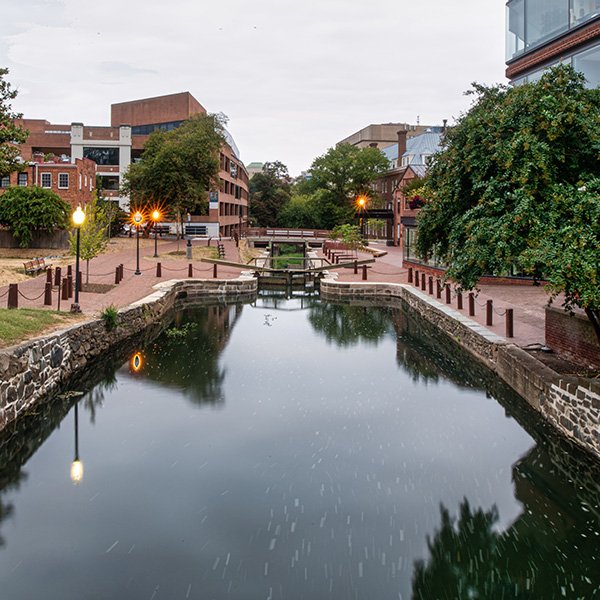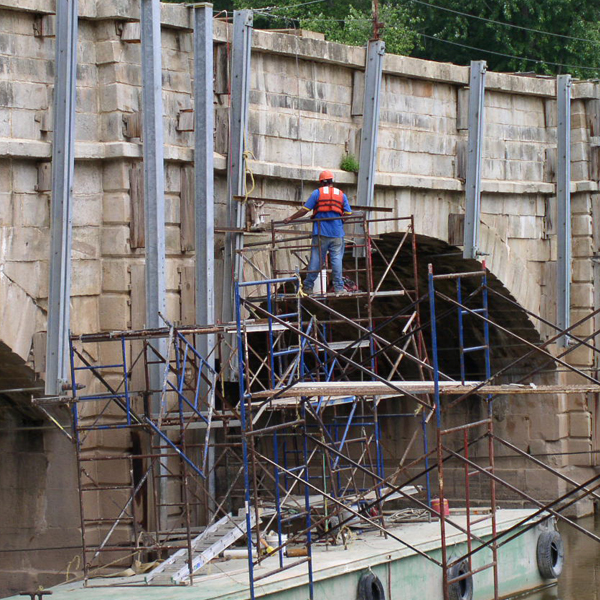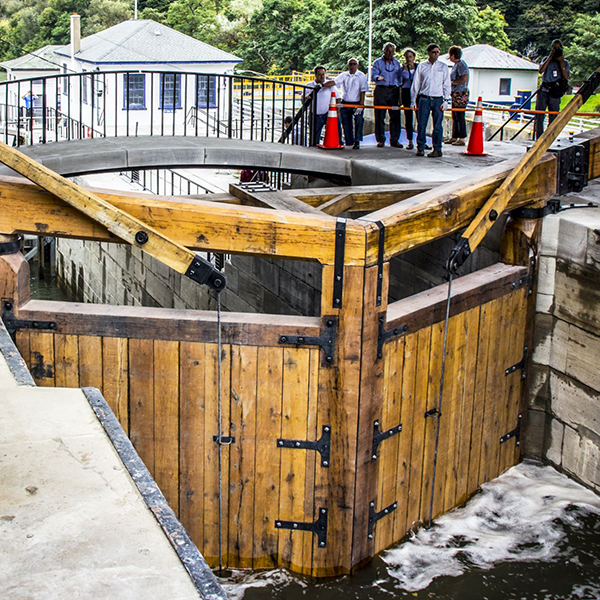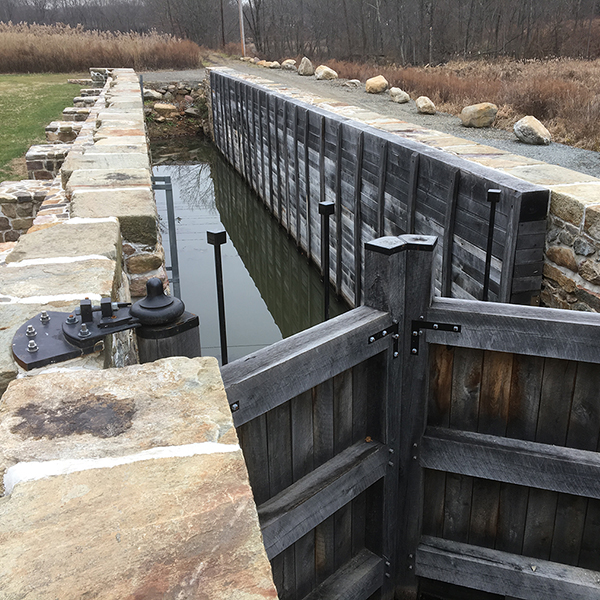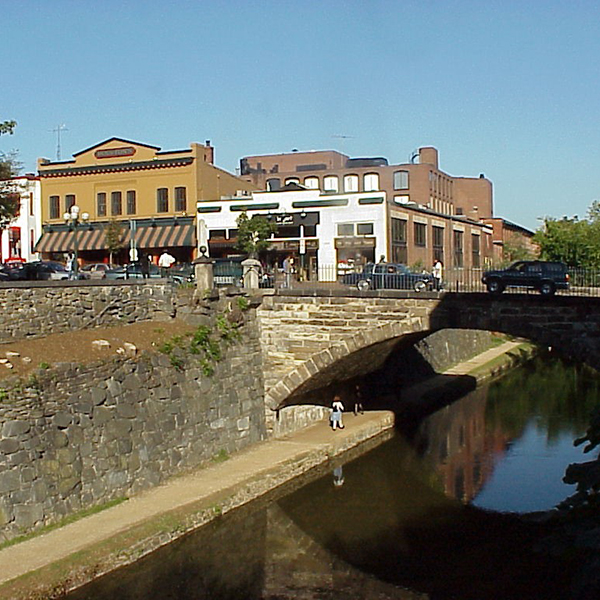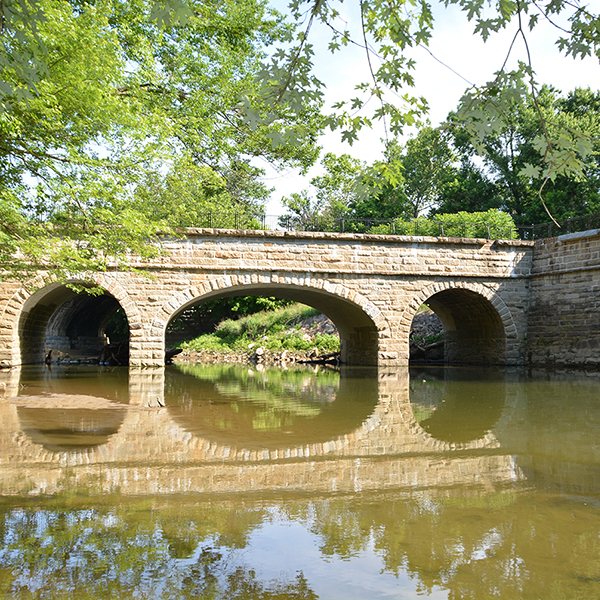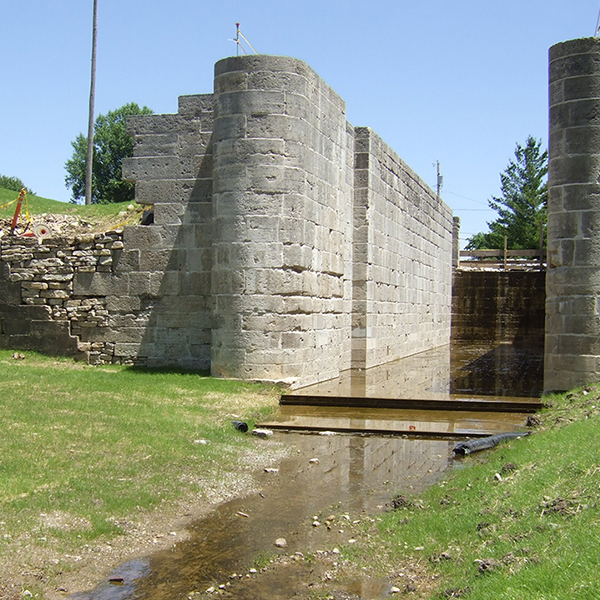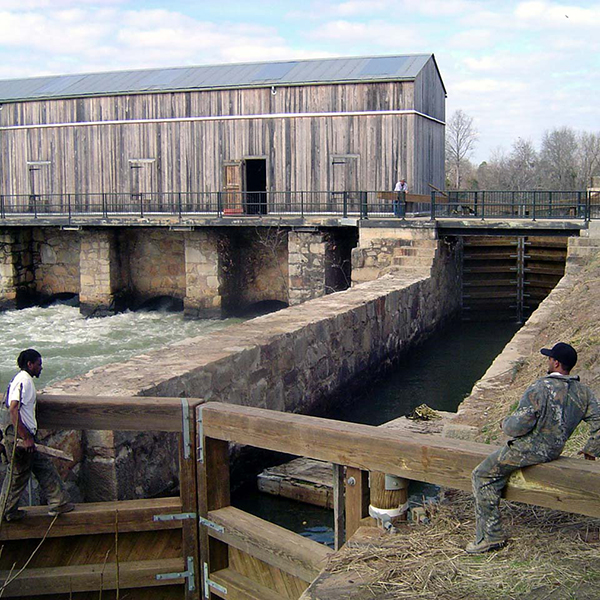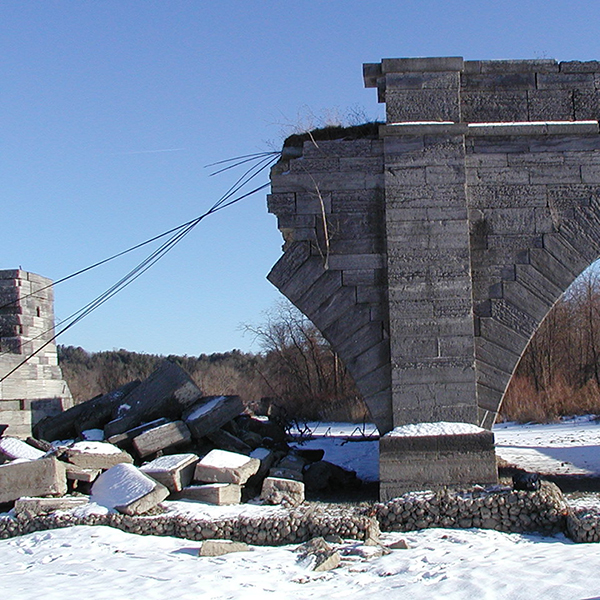Monocacy Aqueduct Stabilization & Preservation
This historic aqueduct comprises seven arches that span 54 feet each and is the largest of 11 stone aqueducts erected along the C&O Canal. Overall, it extends 438 feet in length from abutment to abutment. These aqueducts carried the canal across major tributaries emptying into the Potomac River. Described as one of the finest canal features in the United States, Monocacy Aqueduct represented a major early 19th-century engineering accomplishment. Construction of the aqueduct began in 1829 and was completed four years later in 1833.
McMullan provided a structural assessment of the aqueduct including historical research into the construction methodology, mortar and stone testing, and evaluation of the piers and parapets as well as a value analysis report that was used to determine the option that provided the most value to National Park Service to obtain funding for the project. We used an original approach to the structural evaluation technique based on research done on masonry arch bridges in the United Kingdom. Several alternative stabilization and/or restoration schemes were developed with recommendations for repair, removal of steel bracing, and cost estimates. Final construction plans were provided and included drawing specifications and cost estimates. Contractor qualifications lists were also provided along with inspections of construction work. All restoration work complied with the State Historic Preservation Office and the Standards for Treatment of Historic Properties by the Secretary of the Interior.
Location
Dickerson, MD
Client
National Park Service Region 1 National Capital Area
Architect/Engineer
architrave p.c., architects
General Contractor
Corman Kokosing
CANAL PROJECTS

